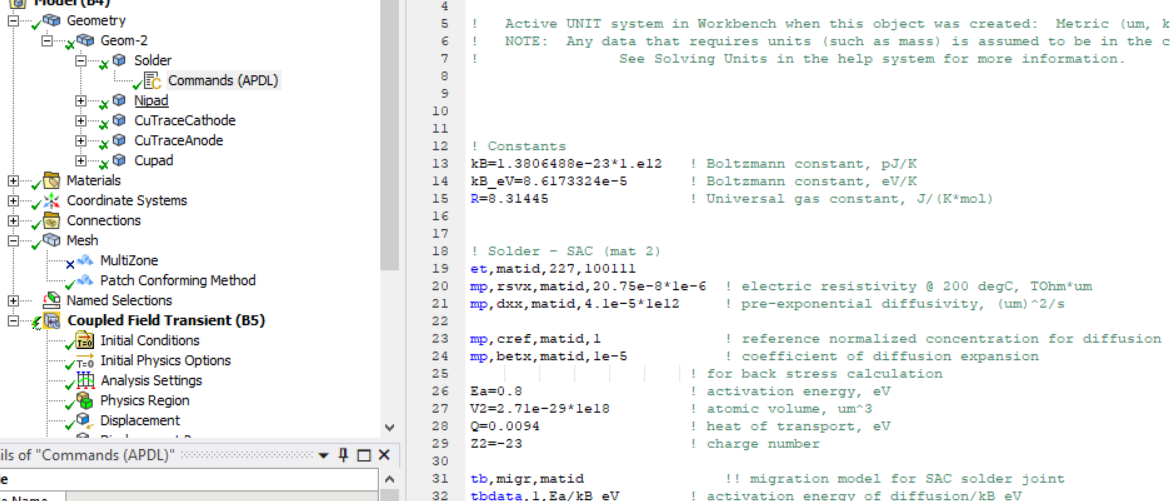TAGGED: peteroznewman
-
-
January 17, 2022 at 5:48 pm
rezam
SubscriberHello
I am going to run a coupled transient analysis which calculates the deviation in atomic concentration from an initial value due to the combined effect of diffusion, electromigration (electrical), thermomigration (thermal), and Stress migration (structural). I found an example in demo ANSYS website as "electromigration in solder ball) - chapter 47.
I followed steps and wanted to calculate the voltage deviation ( electrical resistivity calculation). but the issue I have is that the output parameters dont change over time.
APDL commands in WB.
January 19, 2022 at 5:41 pmwrbulat
Ansys EmployeeHi. I think that physically, the VOLT and TEMP responses will reach steady state long before the end of the transient at 5.4e5 seconds, and that we should expect their calculated values to be constant over the duration of the transient. Now, the CONC DOF varies much more slowly. For example, in TD47 which you mentioned, the calculated response of the concentration is seen to vary gradually and significantly over the very long 6.3e7 second (2 year) transient:
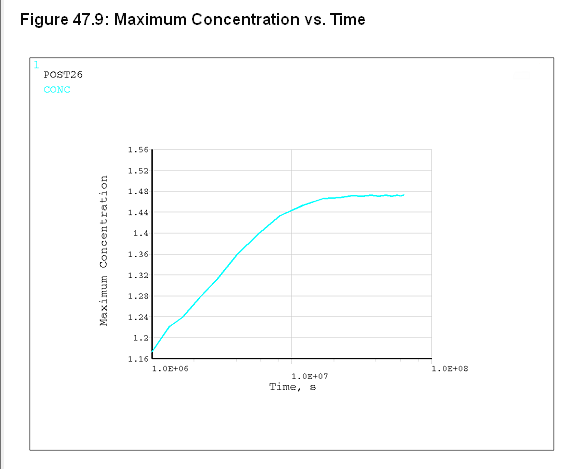 How does your calculated CONC look?
How does your calculated CONC look?
If you download the MAPDL input file for TD47, solve it, and, using POST26, plot the time variation of calculated TEMP and VOLT at one of the nodes, you will see that they are constant (very small variations are probably attributable to "numerical noise" from time integration):
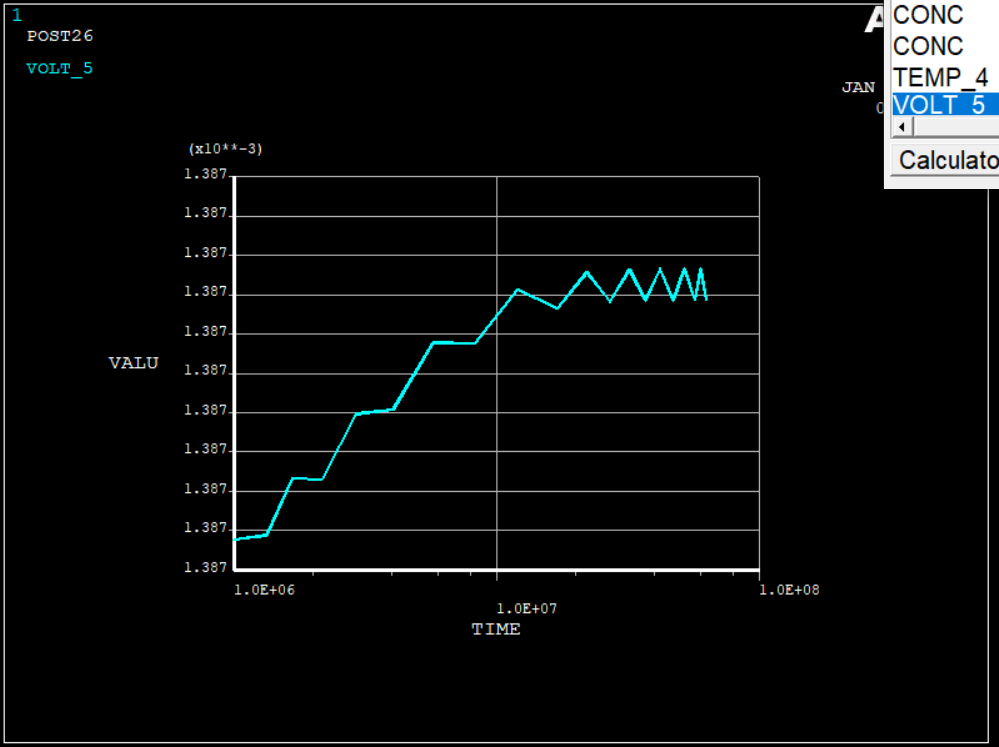
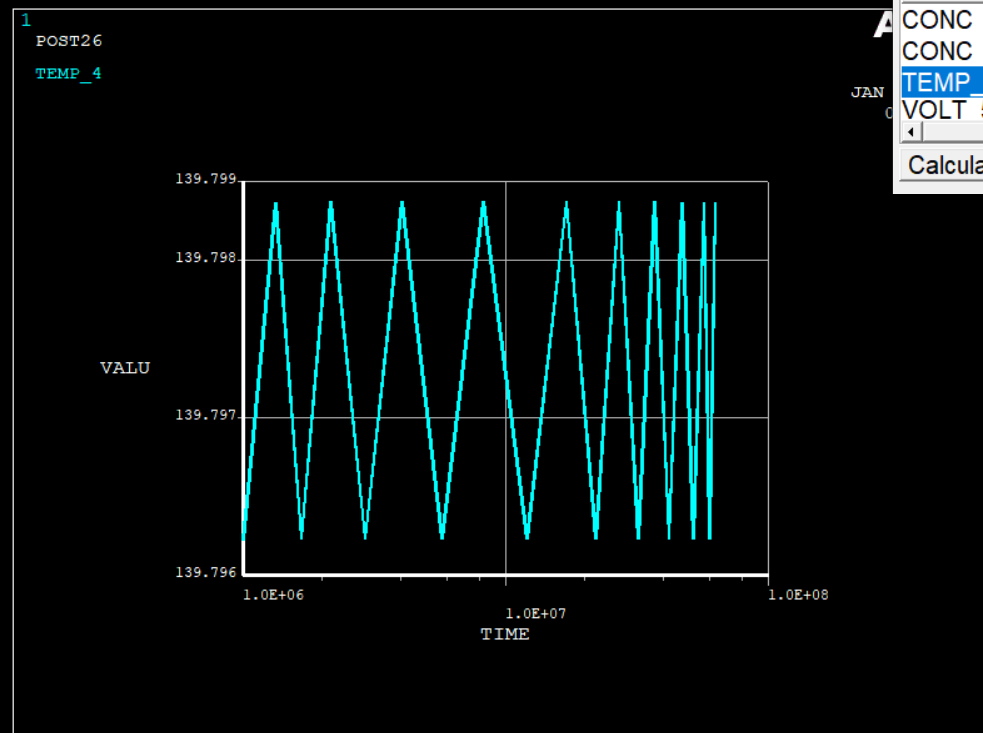
Time integration should probably be turned off for structural and thermal DOFs in runs like these (e.g., TIMINT,OFF,STRUCT and TIMINT,OFF,THERM).
I hope this helps.
Kind regards,
Bill
January 21, 2022 at 8:35 pmrezam
SubscriberDear Bill
Thanks for your prompt reply.
I went through a paper attached above. This paper claims that resistance (or Voltage) changes over the time ( figure below). Could you please take a look on this paper ? I also want to know more on POST26, and MAPDL. I dont know how you got VOLT vs. time in MAPDL. Is it possible to share your file here with me.
Look forward to hearing from you at your earliest convenience.
Thanks Reza
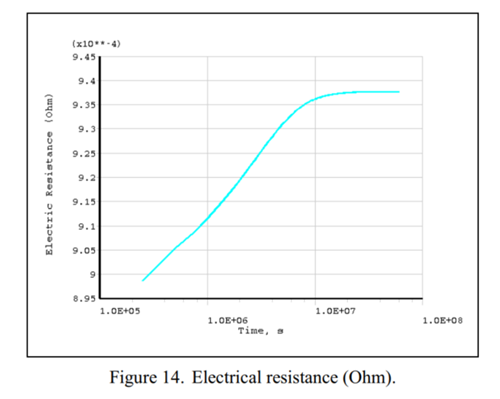
January 26, 2022 at 6:01 pmrezam
SubscriberDear Bill
Thanks for your prompt reply.
Antonova, Looman - 2017 - Finite Elements for Electromigration Analysis.pdf
618.32KB
I went through a paper attached above. This paper claims that resistance (or Voltage) changes over the time ( figure below). Could you please take a look on this paper ? I also want to know more on POST26, and MAPDL. I dont know how you got VOLT vs. time in MAPDL. Is it possible to share your file here with me.
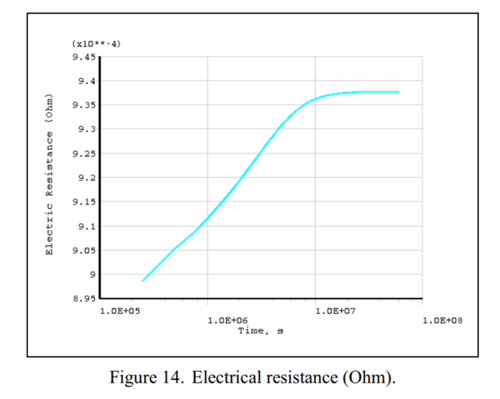
Look forward to hearing from you at your earliest convenience.
Thanks Reza
Viewing 3 reply threads- The topic ‘How to run a coupled field transient?’ is closed to new replies.
Ansys Innovation SpaceTrending discussionsTop Contributors-
3647
-
1313
-
1142
-
1075
-
1013
Top Rated Tags© 2025 Copyright ANSYS, Inc. All rights reserved.
Ansys does not support the usage of unauthorized Ansys software. Please visit www.ansys.com to obtain an official distribution.
-
The Ansys Learning Forum is a public forum. You are prohibited from providing (i) information that is confidential to You, your employer, or any third party, (ii) Personal Data or individually identifiable health information, (iii) any information that is U.S. Government Classified, Controlled Unclassified Information, International Traffic in Arms Regulators (ITAR) or Export Administration Regulators (EAR) controlled or otherwise have been determined by the United States Government or by a foreign government to require protection against unauthorized disclosure for reasons of national security, or (iv) topics or information restricted by the People's Republic of China data protection and privacy laws.

